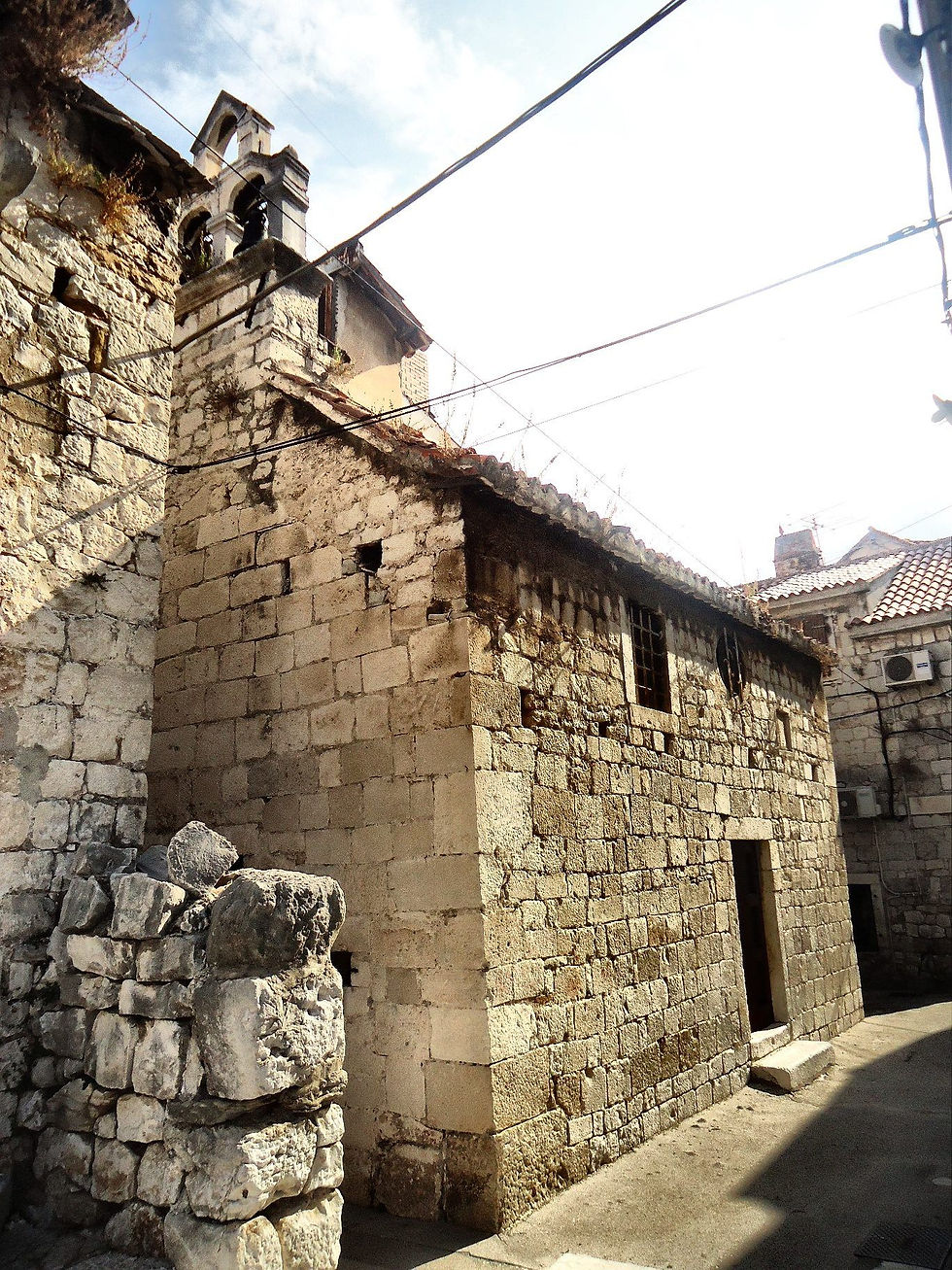SPLIT
Dalmatia Croatia Travel Guide Map


In architectural terms, Split’s districts Veli Varoš, Manuš, Radunica and Lučac are significant. Stone houses, yards, windows, stairs, interweaving of old and new, everything is interesting.
Veli Varoš
There were a few small churches built in the city district Varoš, such as St. Magdalene, St. Lucas, Our Lady of Soca, and St. Nicholas (dating from the 11th century).
Saint Nicholas (Mikula) on Stagnja
Saint Nicholas on Stagnja is located in the middle of Veli Varoš, on top of the Cross Street. Split residents say: "You have to get lost in order to find St. Mikula" – therefore, see map plesae.
This is one of the oldest churches in Split and certainly the oldest in Veli Varoš. It dates from the 11th century. The founders of the church are from Split, Ivan and his wife Tiha. It has been preserved since the times of old Croatian rulers. Its shape and structure differ from traditional church architecture of the time, but over the years, it has been renovated and now it doesn’t have the original appearance.
Old residents of Split liked to tell their descendants the story of the macaroni that the members of St. Nicholas confraternity used to cook and distribute, up until the beginning of World War II, on the day of their patron saint, St. Nicholas (6th December) - patron saint of sailors, fishermen and travelers. St. Nicholas confraternity is very old, established in 1667.
Our Lady of Soce
The church is dedicated to Our Lady of Soce, the patron of the part of Veli Varoš called Soce. Before the 15th century, there was a parish there, and a highly respected confraternity was also active, that had privileges with the Pope Alexander VII. The documents from the 15th century list it under the name of "Madonna di Selce" or "Seoza". It originates from the Croatian word seoce/selce, which means a small village, with only 7 houses on the outskirts of the city. Selce/Seoce has been reduced to Soce. Sočani is the name of the residents of that part of Veli Varoš. Legend has it that the church bells could be heard as far as the Rome.
Saint Magdalene (Mande)
At the northern end of Veli Varoš there is an ancient church dedicated to St. Mary Magdalene. The documents mentioned it in 1301. Due to the proximity of Split leprosaria, the church originally had the name of St. Lazarus and Mary Magdalene, the patron saint of lepers and his sister. Since the 17th century, the name of Saint Lazarus disappears and the church is called Saint Magdalene (Mande). It was the tradition to bring the first ripe grapes to Saint Magdalene on her day. Then a big public celebration was held; the taverns in Plinarska Street would be opened, people would sit on boards and rocks in front of them and toast merrily. They would celebrate the new grapes and drink wine left over from last year.
St. Luke
The Church of Saint Luke is dedicated to fishermen and agricultural workers. Archival documents mentioned this church at the beginning of the 15th century. It is mentioned under the codes "in burbio“and „suburbium Margliani". It was rebuilt from the inside in the 18th century, and then long abandoned until it was restored recently by the Association of Matejuška, which has used it for the purposes of the association - cultural events, exhibitions, promotions. Mass is held in it only on the feast of St. Luke, 18th October.
Church of the Holy Cross
The old Church of the Holy Cross was collapsed in 1657 "that the Turks would not have won it to turn it into their tower". It was located about 150 m below the new one, whose construction started in 1679, and it was completed five years later. The main altar with the crucifix was transferred from the old church. The new church has not survived to this day either. In 1854, the state with its finances and the help of the people of Veli Varoš raised the present-day church, with the ground-plan shaped in the form of the cross, and a bell tower built in the style of the Venetian-Dalmatian belfries. The church was built in the period from 1851 to 1854.
The confraternity of the Holy Cross dates back to 1434 and bears witness to the centuries-old connection between the Croatian people and the Catholic faith.
Villa Ridulin is a very interesting, small stone house of about 14 m2, which inspired the famous Croatian composer Ivo Tijardović for his operetta “The Split Aquarelle”.

St. Mikula on Stagnja - Sveti Nikola na Stagnji - Sveti Mikula na Stagnji


Our Lady of Soca - Gospe od Soca

Saint Magdalene (Mande)- Sveta Mande

Church of the Holy Cross - Crkva sv. Križa


Veli Varoš, Manuš, Radunica and Lučac
 |  |  |
|---|---|---|
 |  |  |
 |  |  |
 |  |  |
 |  |  |
 |  |  |
 |  |  |
 |  |  |